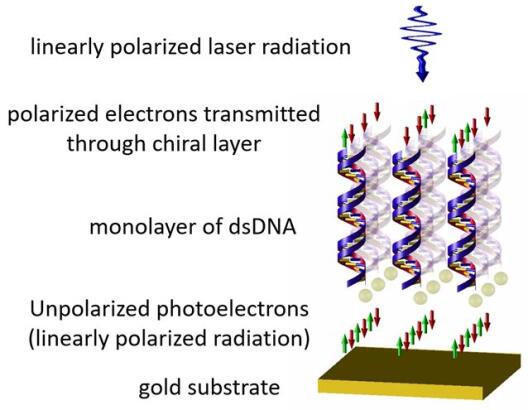
Electron transfer in functional organic films
We are investigating energy, charge and spin transfer processes in organized functional organic films on, e.g., SiC, a bio-inert substrate material of interest also for electronic applications. To understand the interplay between the adsorbates and the substrate as well as interactions within functional constituents of adsorbates the lifetimes of occupied and unoccupied states are investigated. SiC substrates functionalized via organic linkers with several organic dyes by wet chemistry as well as evaporation in vacuum have been characterized by inverse photoemission, X-ray photoelectron spectroscopy, and picosecond time-resolved fluorescence microscopy. The latter already yields spatially resolved positions of fluorophores.
Ultrafast electron transfer processes are studied by time-resolved two-photon photoemission (2PPE), employing laser radiation with pulse durations of a few tens of femtoseconds. Standard 2PPE spectroscopy does not yield any spatial information, because the recorded signal integrates over the whole light spot on the sample. In order to investigate structural dependencies of electron transfer processes a photoemission electron microscope (PEEM) is employed. This may yield a spatial resolution of 20 nm or better, depending on the type of instrument. In the experiments we use an optical parametric amplifier (OPA) pumped by a Ti:sapphire laser with pulse energies up to 1.1 mJ, a pulse duration of 30 fs and repetition rates between 1 and 10 kHz. The OPA is continuously tunable from 230 nm to 2700 nm with pulse durations between 30 fs and 120 fs and pulse energies between 2 µJ and 250 µJ, depending on the desired output wavelength. A motorized delay stage with a Michelson-type interferometer splits the resulting pulses into two separate ones and thus introduces an adjustable delay with femtosecond resolution.
Lifetime measurements allow to sensitively assess different binding environments. It is therefore expected that changes in the binding of non-covalently bound buildings blocks of functional materials can be revealed.

